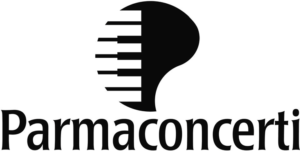Bookkeeping 101: Bookkeeping Basics for Small Businesses
Primary duties of small business accounting include bookkeeping, preparing and filing tax returns, and drafting financial reports. Hire an accountant or tax advisor to help you with anything you don’t understand with numbers. Accounting errors can cost you heavy fines from state and federal agencies. There exist several financing and accounting software in the market that can help with tracking budget and transactions by producing financial statements for your small business. At tax time, carefully review your company’s full-year financial reports before giving them to your accountant. Before you sign your return, be sure to review it for accuracy based on your full-year financial reports.
Remembering to do all the tasks on your year end accounting checklist or that you should even have a checklist may slip your mind during the holiday time. Go through each line item on your income statement and balance sheet and review the transactions in each account for accuracy. If you reconcile all of your bank/credit card statements, then this means you have some transactions that are incorrectly classified. The very first item on your year end accounting checklist should be making sure your bookkeeping records are updated. In order to efficiently complete your year end accounting checklist, you should stay on top of your business finances throughout the year.
Well, to answer the question, yes; it is entirely possible to do accounting on your own. How well you do it depends on the scale of the business and your depth of knowledge on the matter. As we saw, there are various online bookkeeping software options that can help record transactions and streamline various accounting processes. Once you’ve established the steps above, all that is left is to set up an online accounting system.
At the end of your fiscal year, you will be looking at this account again to determine what receivables you will need to send to collections or write off for a deduction. If you have not prepared a budget, compare your current year-to-date P&L with the same prior-period year-to-date P&L to identify variances and make adjustments. What you do at year end for your business is really important to your success in the New Year.
It encompasses a variety of day-to-day tasks, including basic data entry, categorizing transactions, managing accounts receivable and running payroll. Toward the end of the year, it is imperative to assess the company’s yearly financial performance and its current financial health. This is determined by preparing statements, including the profit and loss statement, cash flow statement and the balance sheet. If your accounting software is connected to your bank and synced daily, there’s no need to wait for your monthly bank statement.
Start recording financial transactions
People who aren’t small-business accountants or often use bookkeeping and accounting interchangeably, but they actually mean two different things. Accounting means not just keeping financial records but also analyzing and interpreting financial data so you can make wise fiscal decisions. Accounting software like QuickBooks https://adprun.net/new-business-accounting-checklist-for-startups/ can help you generate financial reports and manage taxes, but for more guidance, see our guide to financial reporting. To keep a handy reference of this checklist, save our infographic below. To ensure accuracy, you should reconcile each bank and/or credit card statement to what you have in your accounting records.
- Missing payments could incur charges or interest, or the damaging of valuable business relationships.
- As you try to figure out which need to prioritize in your new venture, it is crucial that you first learn how to set up accounting for a new business.
- You’ll have a better outcome and be proactive in protecting the financial interests of your company.
- An experienced accountant can help you get your business set up faster and create a system for accurate accounting that grows with your business.
- If you are self-employed, you’ll need to withhold taxes from your income and then remit them to the government the same way an employer withholds taxes from their employee’s pay.
New business owners DO NOT use QB for invoicing or processing credit cards from clients. They do take your hard earned money from your clients but do not give it to you like they said they would. Its beyond the 5 day waiting period , its beyond the 2 day account transaction review, its beyond weeks now! I initiated contact, not them like it should be when they hold your money for no reason with no explanation.
Compute Estimated Income Tax and Make Payment
We not only have the knowledge and accounting tools, but also the experience of navigating all the balance sheets, chart of accounts, complex sales tax regulations, and rules. Now, of the two, new businesses are better off using accrual accounting. With accrual accounting, the transactions are recorded early on in the process. With this, the business can better track accounts receivable and accounts payable.
ways to improve cash flow management
Xendoo will also help with such things as lease negotiations, ongoing tax reporting, cash and treasury management, and developing long-term strategic plans for your finances. The rule of thumb is to keep a majority of your revenue in the checking account and then a small portion in the savings account to cover such things as emergencies and taxes. It is recommended that you set aside and save at least 30% of your total income for taxes. If you are reading this, then it probably means you’ve just launched or intend to start a new business in the near future. As you try to figure out which need to prioritize in your new venture, it is crucial that you first learn how to set up accounting for a new business. So, put on your accounting cap and get ready to dive into the heaviest of heavy financial management.
Small-business accounting checklist
Creating your own small business might be one of the hardest things you ever do—but we have complete confidence that you can handle it. When you stay on top of your bookkeeping and accounting processes, you empower yourself to make wise financial decisions. With these basic accounting tips for small-business owners under your belt, we’re sure you have the tools you need for small-business success. If you’re self-employed, you’ll pay self-employment taxes, which is a little different from small-business taxes and personal taxes. You can get more guidance on how to record and pay a small-business tax with your accounting software and tax professional. You already know this, but just to make sure it’s crystal clear, taxes are ridiculously complicated.
For a more in-depth understanding, take a look at our accounting terms and accounting principles articles. Business accounting is the process of gathering and analyzing financial information on business activity, recording transactions, and producing financial statements. One aspect of preparing for the future is in the management of your cash flow to ensure that you are ready for slow months. It is inevitable that some months will be more profitable than others. Having a good financial strategy in place will give you the emergency savings that will carry you through the months when cash is tight.
Step #2: Setting Up an Entity
When you create a bookkeeping process for your new business, find what works best for you. It’s crucial to keep your records updated and check in with them at least once a week. When starting a small business, it’s essential to consider your accounting. Financial accounting is an HMRC requirement and a crucial way to track your financial performance and profitability. But there are many benefits to getting everything in order before the end of the financial year.
Review quarterly payroll reports and make payments
They include invoicing, financial data management, and other business bank account fun. When it comes to daily accounting business needs, you have a pretty light plate. You have plenty of financial statements to review every week, month, quarter, and so on, but your daily business accounting responsibilities consist of one main task. The following accounting checklist lays out a recommended timeline for the accounting functions that will show the state of your business and allow you to streamline your tax preparation. For a thorough understanding of business accounting, continue reading. If you’re looking for a specific answer, use the links below to jump to a section of your choosing.


